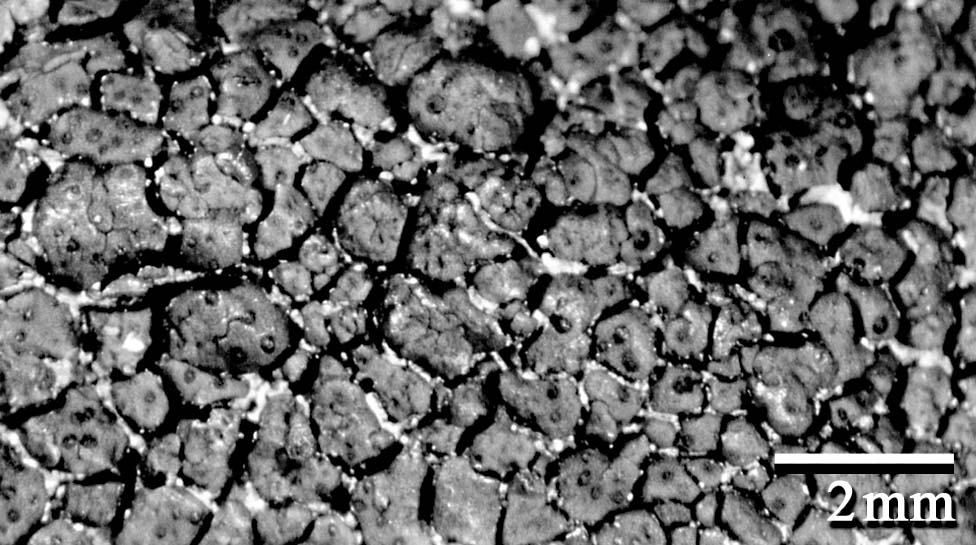
Consortium of Lichen Herbaria
- building a Global Consortium of Bryophytes and Lichens as keystones of cryptobiotic communities -
- Home
- Search
- Images
- Species Checklists
- US States: O-Z >
- US National Parks
- Central America
- South America
- US National Parks
- Southern Subpolar Region
|
Family: Verrucariaceae |
Nash, T.H., Ryan, B.D., Gries, C., Bungartz, F., (eds.) 2002. Lichen Flora of the Greater Sonoran Desert Region. Vol 1. Life habit: lichenized Thallus: squamulose squamules: almost leafy, appressed or with margins free from the substrate upper surface: various shades of brown, smooth, dull or shiny upper cortex: paraplectenchymatous, 30-130 µm thick, composed of large (6-20 µm), angular, strongly conglutinated cells with the separating hyphal walls ± thickened above, often overlain by an epinecral layer medulla: white, composed of irregularly interwoven filamentous hyphae (prosoplectenchymatous), or with ± numerous globular cells photobiont: primary one a Myrmecia, secondary photobiont absent; algal layer: horizontally continuous, sharply delimited from the upper cortex; algal cells: 7-18 µm in diam. lower cortex: paraplectenchymatous or composed of more densely aggregated globular cells or lacking lower surface: pale to black, usually attached by a weft of hyaline or brownish rhizohyphae, with additional true rhizines in a few species Ascomata: perithecial, laminal, immersed, broadly pyriform or subglobose, without involucrellum; exciple: hyaline or yellowish or brown; interascal filaments: absent; hymenial gel: amyloid, I+ reddish or blue, always blue after pretreatment with K; ostiolar filaments: present asci: ± cylindrical, thin-walled (I-), without a tholus, 8-spored ascospores: uniseriate at least when young, ellipsoid to subglobose, obtuse at the poles, aseptate; wall: hyaline, smooth, without thickenings, halo or sculpturing Conidiomata: pycnidial, Dermatocarpon-type (Harada 1993), multilocular conidia: oblong-ellipsoid or bacilliform Secondary metabolites: none detected Geography: world-wide, but mainly in temperate regions Substrate: soil, moss, detritus, rock or bark. |
Powered by Symbiota









